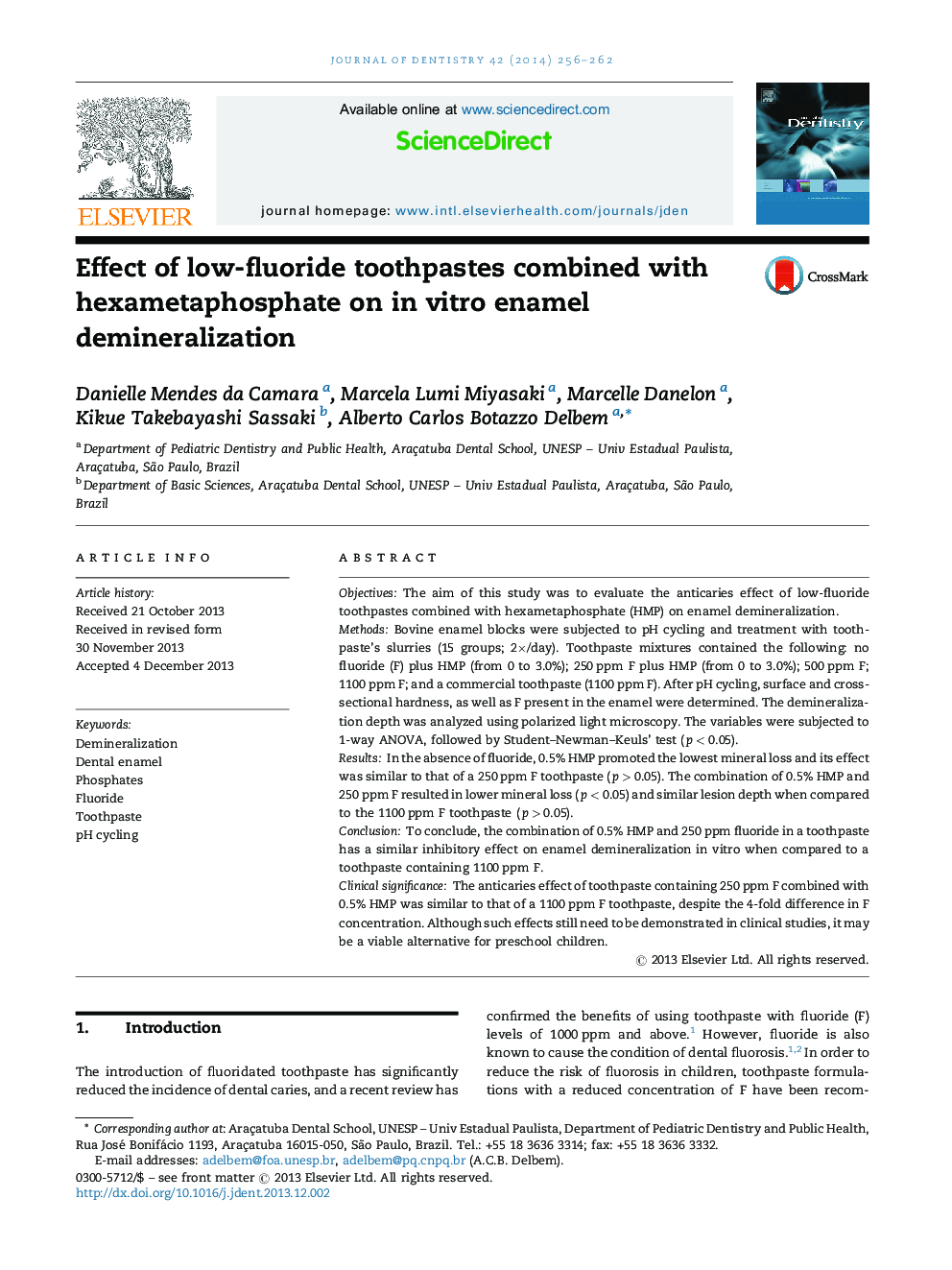| Article ID | Journal | Published Year | Pages | File Type |
|---|---|---|---|---|
| 6053613 | Journal of Dentistry | 2014 | 7 Pages |
ObjectivesThe aim of this study was to evaluate the anticaries effect of low-fluoride toothpastes combined with hexametaphosphate (HMP) on enamel demineralization.MethodsBovine enamel blocks were subjected to pH cycling and treatment with toothpaste's slurries (15 groups; 2Ã/day). Toothpaste mixtures contained the following: no fluoride (F) plus HMP (from 0 to 3.0%); 250 ppm F plus HMP (from 0 to 3.0%); 500 ppm F; 1100 ppm F; and a commercial toothpaste (1100 ppm F). After pH cycling, surface and cross-sectional hardness, as well as F present in the enamel were determined. The demineralization depth was analyzed using polarized light microscopy. The variables were subjected to 1-way ANOVA, followed by Student-Newman-Keuls' test (p < 0.05).ResultsIn the absence of fluoride, 0.5% HMP promoted the lowest mineral loss and its effect was similar to that of a 250 ppm F toothpaste (p > 0.05). The combination of 0.5% HMP and 250 ppm F resulted in lower mineral loss (p < 0.05) and similar lesion depth when compared to the 1100 ppm F toothpaste (p > 0.05).ConclusionTo conclude, the combination of 0.5% HMP and 250 ppm fluoride in a toothpaste has a similar inhibitory effect on enamel demineralization in vitro when compared to a toothpaste containing 1100 ppm F.Clinical significanceThe anticaries effect of toothpaste containing 250 ppm F combined with 0.5% HMP was similar to that of a 1100 ppm F toothpaste, despite the 4-fold difference in F concentration. Although such effects still need to be demonstrated in clinical studies, it may be a viable alternative for preschool children.
